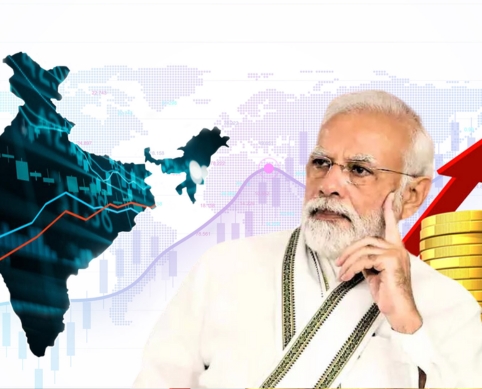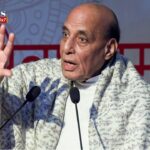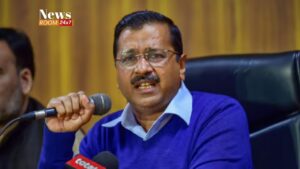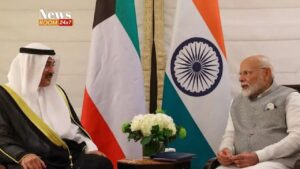What is driving the global optimism about India’s economy?

Amid global economic challenges, geopolitical tensions, and recession fears, the world is celebrating India’s growth trajectory. Jamie Dimon, chairman and CEO of JPMorgan, America’s largest bank, believes India has the potential to become a $7 trillion economy by the end of this decade. He attributes this to Prime Minister Narendra Modi’s “strong” leadership in developing the digital and physical infrastructure that is attracting multinationals involved in advanced manufacturing and services.
Reflecting on his journey with India, Dimon shared, “My first visit to India was in 2005, just after I became CEO of JPMorgan. I visited a small office in the old financial district, and at that time, we conducted research on 15 to 20 companies. Today, we analyze nearly 140 companies, helping educate the world about Indian businesses. We now bank 850 multinationals here, and our Corporate Centre employs close to 55,000 people, supporting global operations in engineering, cybersecurity, technology, data, and AI. We’re also building a strong payment infrastructure for our clients in India. These advancements will drive even greater growth, and with PM Modi’s leadership, this progress is absolutely within reach.”
How the World Views India’s Growth Narrative
Dimon is not alone in expressing optimism about India’s economic growth potential. Recent global commentary and analysis have been notably favorable regarding India’s growth prospects. James Sullivan, Managing Director of Asia Pacific Equity Research at JPMorgan, anticipates a significant $100 billion influx into India over the coming years. “I would argue that there are very strong long-term tactical drivers that position India as a key overweight from a structural perspective for JPMorgan,” Sullivan stated in an interview with CNBC-TV18.
John Chambers, Chairman Emeritus of Cisco and head of the India-US Strategic Partnership Forum, shares a highly positive outlook on the future of the Indian economy, the current stock market landscape, and the growth of innovation within the country. In a recent interview, he remarked, “I always try to think long-term. By the end of the century, India will likely be 90 to 100% larger than China and surpass the US by a 30 to 40% margin. That is the most probable scenario. [Becoming the second largest economy] could occur within a 30 to 40-year timeframe. However, I believe we need to reassess along the way, as India has progressed much faster than anyone anticipated.”
An S&P Global report released last week indicated that India is on track to become the third-largest economy by 2030-31. On Tuesday, S&P Global Ratings reaffirmed its growth forecast for India at 6.8% for the current fiscal year and anticipated that the Reserve Bank of India (RBI) would begin cutting interest rates during its October monetary policy review. In its economic outlook for the Asia Pacific region, S&P Global Ratings also maintained its GDP growth forecast for the 2025-26 fiscal year at 6.9%, noting that robust growth in India would enable the RBI to focus on aligning inflation with its targets. Just a few days ago, Deloitte highlighted that India remains a bright spot amid a generally bleak global outlook, projecting a 7% growth rate for the current fiscal year despite various challenges.
Earlier this month, the World Bank raised its growth forecast for the Indian economy for FY25 to 7%, up from the previously projected 6.6%. Shortly before that, Moody’s Ratings had increased its economic growth projections for India in 2024 to 7.2%, up from 6.8%. Additionally, both the International Monetary Fund (IMF) and the Asian Development Bank (ADB) have revised their growth forecasts for the Indian economy to 7% for FY25. In June, Moody’s stated that India would continue to be the fastest-growing economy in the region, building on last year’s domestically driven momentum, with policy support expected to persist even as a new government took office with a reduced majority.
Amid Challenging Global Conditions, Where Is India Headed?
In the context of geopolitical uncertainties and a relatively restrictive monetary policy, global economic activity slowed down to 2.6% in 2023. However, India demonstrated “extraordinary resilience against challenging external conditions,” achieving a growth rate of 8.2% in FY24, making it the fastest-growing major economy in the world, according to the World Bank’s latest India Development Update.
India’s growth remains robust despite a difficult global environment, with a recovery in agriculture expected to partially counter a slight slowdown in industrial growth, while the services sector is anticipated to remain strong, as highlighted in the report.
Despite experiencing cyclical moderation this fiscal year, India is projected to continue being the fastest-growing large economy and increase its contribution to global growth, according to an S&P Global analysis. The country is well-positioned to enhance its growth prospects by furthering its infrastructure development and accelerating growth-enhancing reforms. In the current landscape, it is crucial for the private sector to lead in achieving a balanced and sustainable boost in the investment cycle, as noted by S&P Global. Equally important is addressing structural bottlenecks and climate risks to limit food inflation while fostering conditions for supportive monetary policy. The announcements in the Union Budget reflect these priorities, with a keen focus on execution moving forward.
A recent analysis by Moody’s describes India as being in a macroeconomic “sweet spot,” characterized by solid growth and moderating inflation. It indicated that household consumption is likely to rise as headline inflation trends closer to the RBI’s target. “Indeed, signs of a revival in rural demand are already visible, supported by improving agricultural output prospects amid above-normal rainfall during the monsoon season,” the report stated. Additionally, non-financial corporate and bank balance sheets are in significantly better shape than before the pandemic, with firms increasingly accessing equity and bond markets for capital. While manufacturing has struggled to gain significant traction over the past decade, improvements in the domestic operating environment and favorable global trends are expected to enhance the prospects for India’s manufacturing sector going forward, according to the ratings agency.
Geopolitical tensions can disrupt foreign direct investment (FDI) flows and impact investment decisions, and it appears that India is reaping benefits in this context, as noted by Moody’s in June. The slow recovery of FDI into China, especially in strategic sectors like semiconductors, is largely due to US and EU policies aimed at enhancing domestic production and reducing reliance on foreign suppliers that are not aligned with their interests.
The World Bank’s latest India Development Update emphasizes the vital role of trade in driving economic growth. “India can further enhance its growth by tapping into its global trade potential,” stated Auguste Tano Kouame, World Bank’s Country Director in India. “Beyond its strengths in IT, business services, and pharmaceuticals, India has the opportunity to diversify its export portfolio by increasing exports in sectors such as textiles, apparel, footwear, electronics, and green technology products.”
To achieve the ambitious target of $1 trillion in merchandise exports by 2030, the World Bank update advocates for a three-pronged strategy: further reducing trade costs, lowering trade barriers, and deepening trade integration.









